Concawe Reports
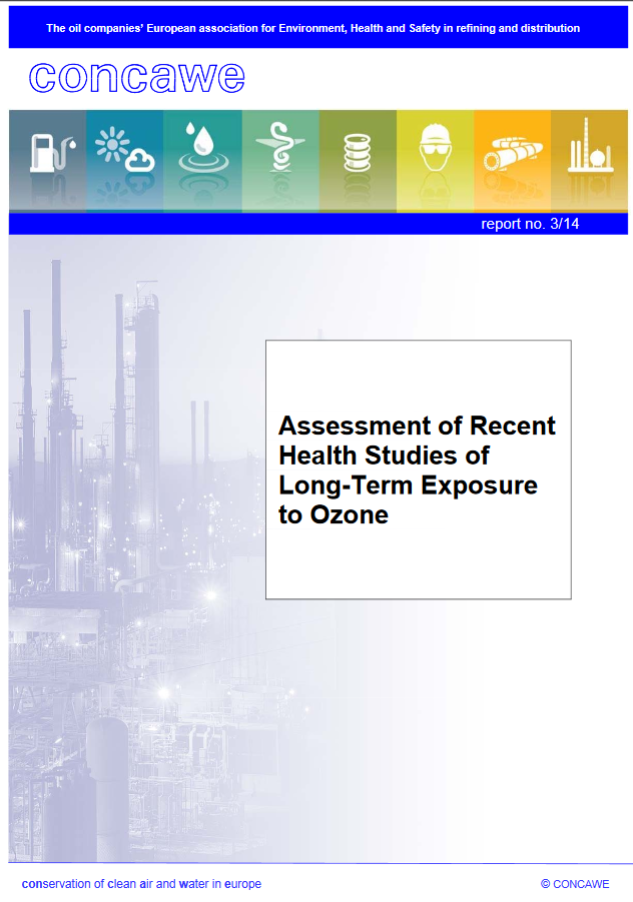
Reports
Assessment of Recent Health Studies of Long-Term Exposure to Ozone
Report no. 3/14: This report summarises the assessment of the policy relevant long-term health studies published since the last update of the ozone Air Quality Limit Value (AQLV). This project was und...
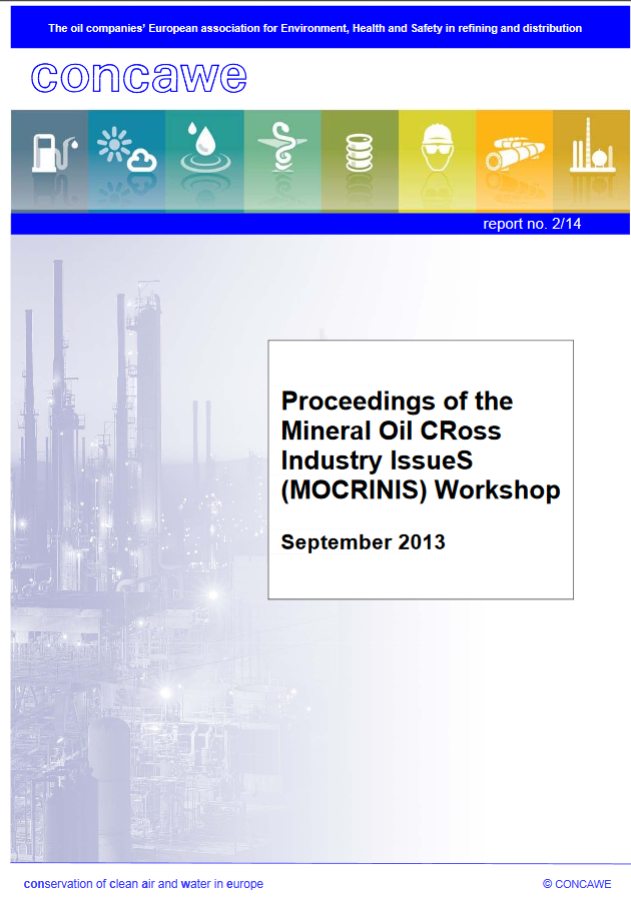
Reports
Proceedings of the Mineral Oil CRoss Industry IssueS (MOCRINIS) Workshop September 2013
Report no. 2/14: CONCAWE organised a 2-day Mineral Oil Cross Industry Issues (MOCRINIS)Workshop in Bologna, Italy in September 2013. The objective of the Workshop was to address topics that have arise...
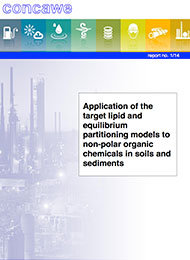
Reports
Application of the target lipid and equilibrium partitioning models to non-polar organic chemicals in soils and sediments
The Target Lipid Model (TLM) provides a framework for deriving predicted no effect concentrations (PNEC) for non polar organic chemicals to organisms in the environment. This approach has been used to...
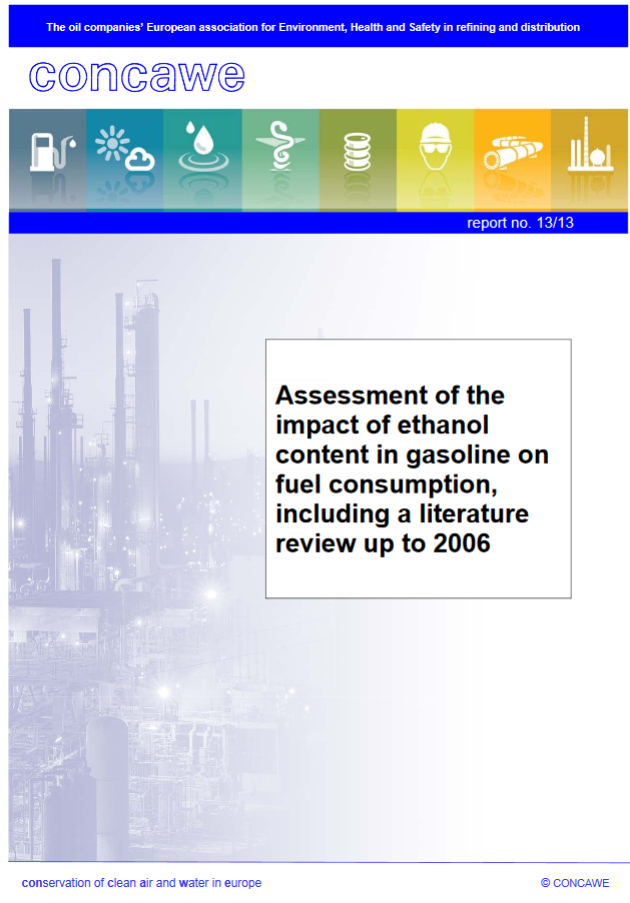
Reports
Assessment of the impact of ethanol content in gasoline on fuel consumption, including a literature review up to 2006
Report no. 13/13: Ethanol, at low concentrations in motor gasoline, is known to impact both the fuel consumption and emissions from vehicles. Because ethanol has a lower energy content per litre compa...
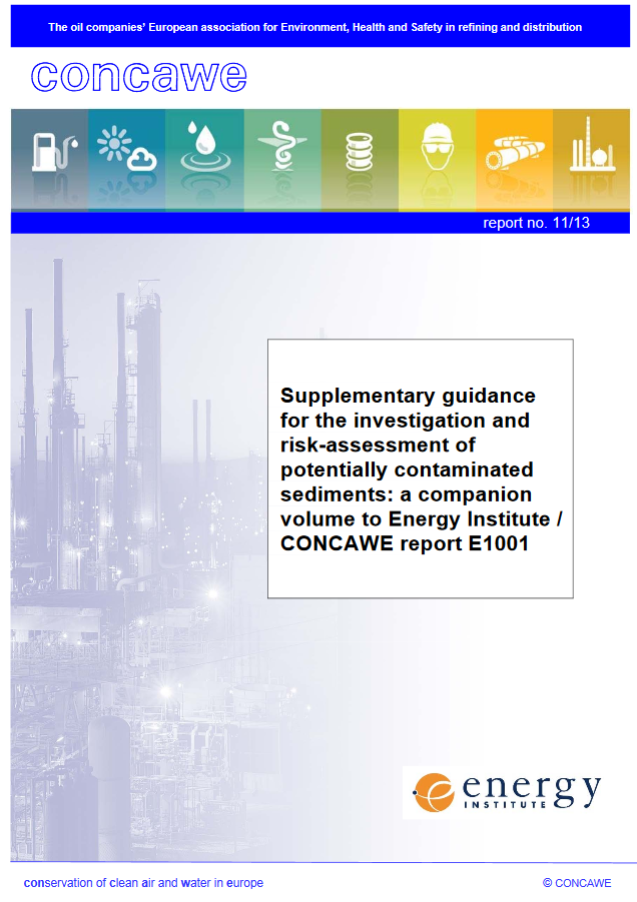
Reports
Supplementary guidance for the investigation and risk-assessment of potentially contaminated sediments: a companion volume to Energy Institute
Report no. 11/13: This report provides guidance on the investigation and assessment of potentially contaminated sediments, focusing on the inland, estuarine and coastal environments. It is designed as...
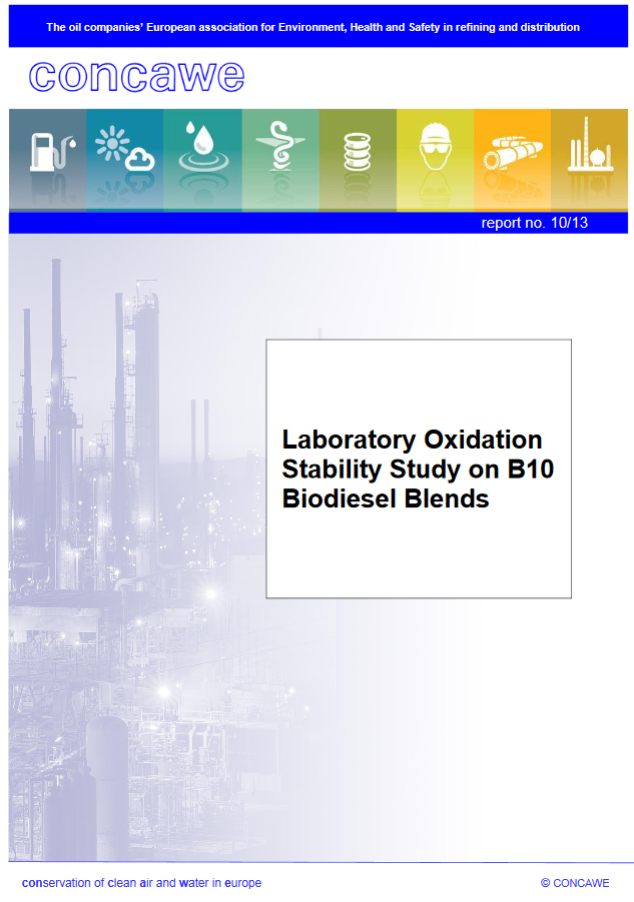
Reports
Laboratory Oxidation Stability Study on B10 Biodiesel Blends
Report no. 10/13: A laboratory oxidation stability study has been completed jointly by CONCAWE and DGMK on three biodiesel blends containing 10% v/v (B10) Fatty Acid Methyl Ester (FAME). The results o...
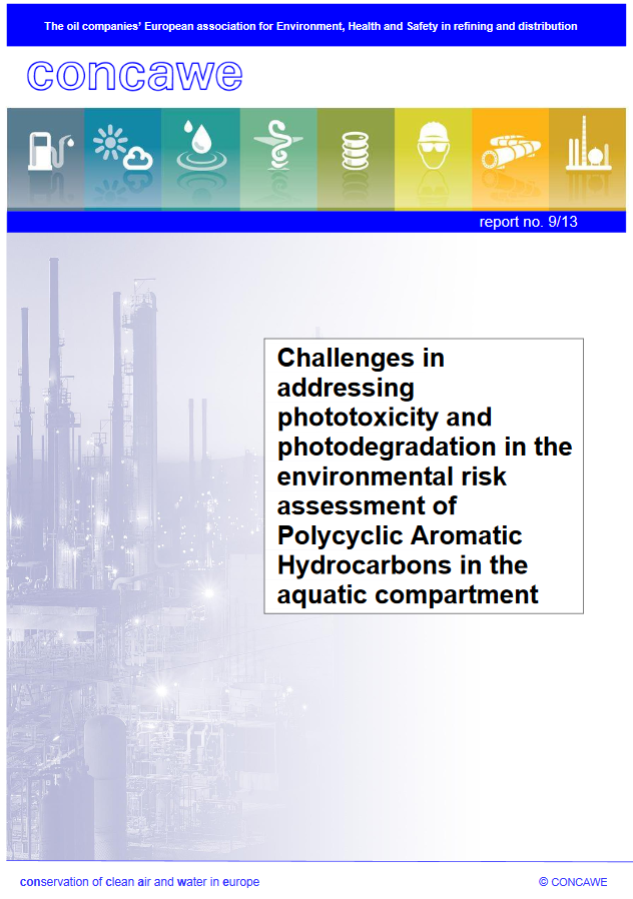
Reports
Challenges in addressing phototoxicity and photodegradation in the environmental risk assessment of Polycyclic Aromatic Hydrocarbons in the aquatic compartment
Report no. 9/13: This report summarises how light might interact with Polycyclic Aromatic Hydrocarbons (PAHs) to alter both their environmental fate and their potential to cause adverse effects. The q...
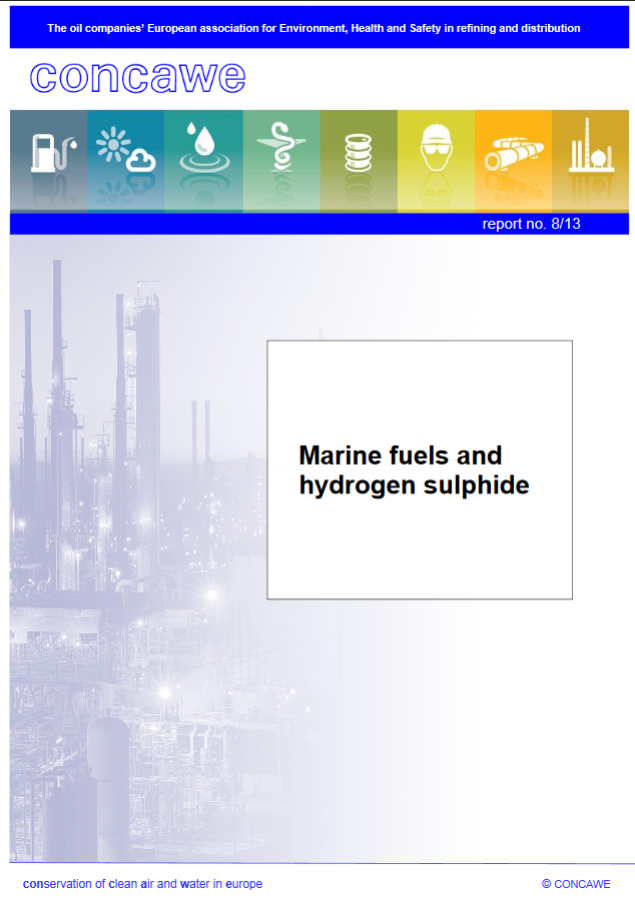
Reports
Marine fuels and hydrogen sulphide
Report no. 8/13: The safe handling of petroleum cargoes and refined products that may contain hydrogen sulphide (H2S) is an important issue for the marine and inland fuel industries. Attention has ref...
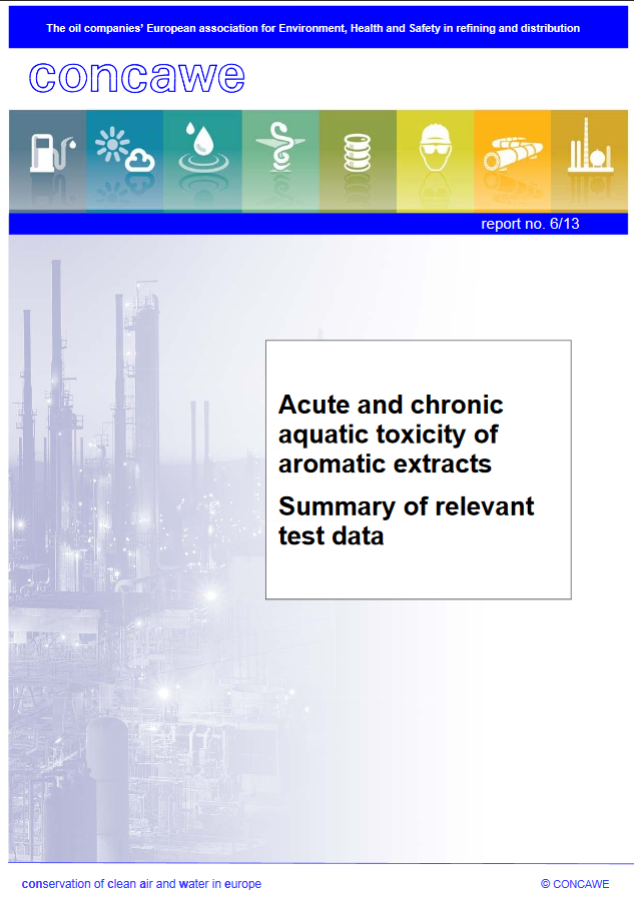
Reports
Acute and chronic aquatic toxicity of aromatic extracts. Summary of relevant test data
Report no. 6/13: This report describes the experimental procedures and the results obtained in acute and chronic ecotoxicity tests on several aromatic extracts samples. The samples were tested for tox...
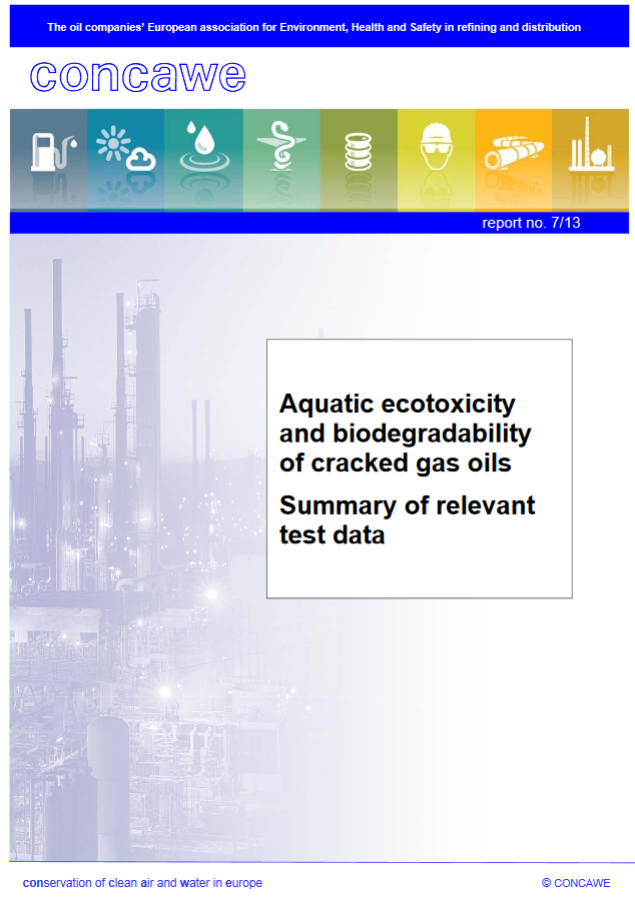
Reports
Aquatic ecotoxicity and biodegradability of cracked gas oils. Summary of relevant test data
Report no. 7/13: This report describes the experimental procedures and the results obtained in acute and chronic ecotoxicity tests as well as a biodegradation study on cracked gas oil samples.
In a...
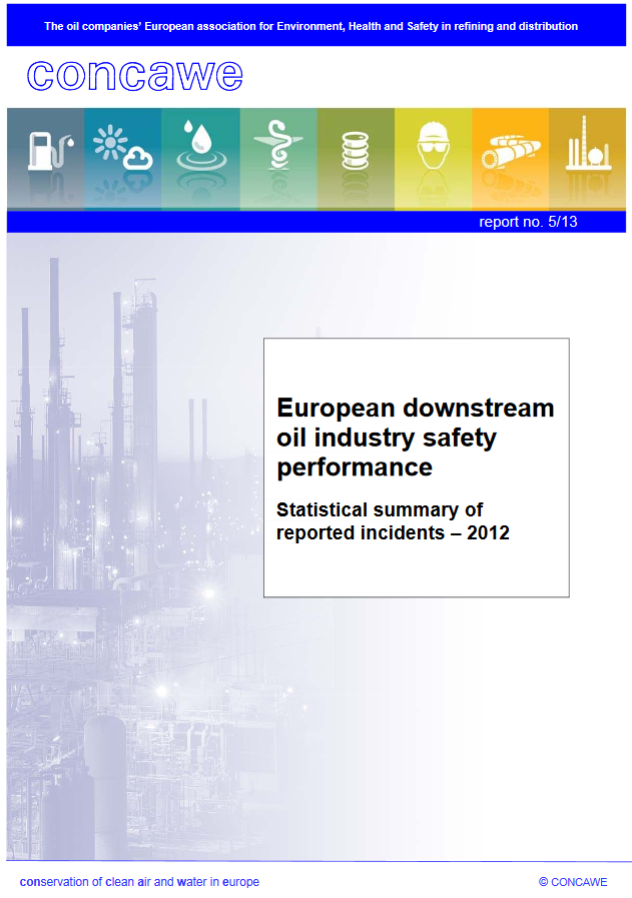
Reports
European downstream oil industry safety performance. Statistical summary of reported incidents – 2012
Report no. 5/13: In this nineteenth annual report on European downstream oil industry safety performance, 2012 statistics are presented on work-related personal injuries for the industry’s own emplo...

Reports
Refinery effluent analysis methodologies for relevant parameters from EU-regulatory regimes
Report no. 4/13: This report provides guidance to CONCAWE members on the analytical methods that might be used to monitor oil refinery effluents for those refinery-specific parameters covered by relev...

Reports
Predicting refinery effluent toxicity on the basis of hydrocarbon composition determined by GCxGC analysis
Report no. 2/13: A high resolution analytical method for determining hydrocarbon blocks in petroleum products by comprehensive two-dimensional gas chromatography (GCxGC) was used for the analysis of p...

Reports
Oil refining in the EU in 2020, with perspectives to 2030
Report no. 1/13: In the two decades to 2030, the EU refining industry will face significant changes in product demand, both in absolute terms and with regard to the relative demand for gasoline and di...
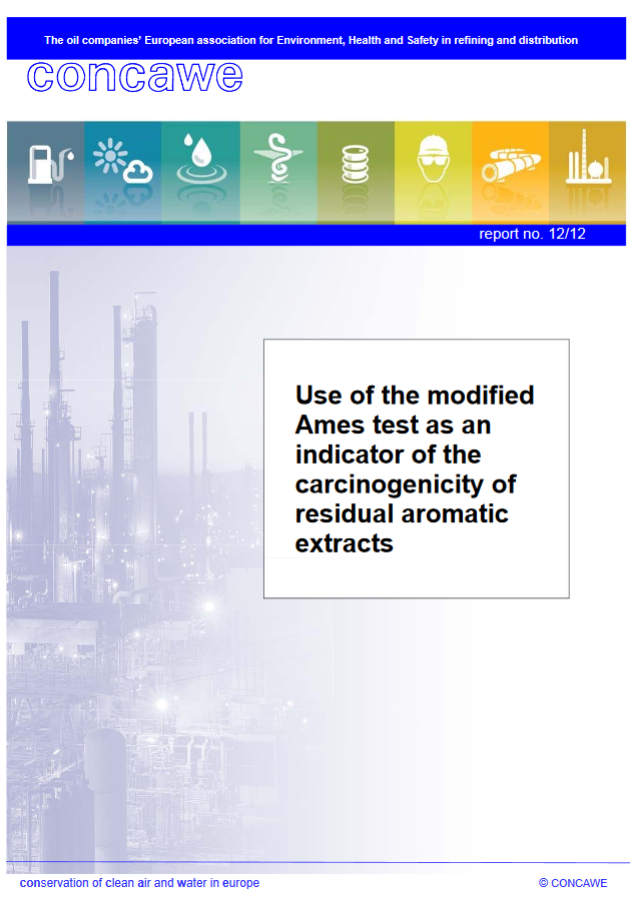
Reports
Use of the modified Ames test as an indicator of the carcinogenicity of residual aromatic extracts
Report no. 12/12: Existing data demonstrate that residual aromatic extracts (RAEs) can be either carcinogenic or non-carcinogenic. CONCAWE had previously concluded that “Although limited data availa...
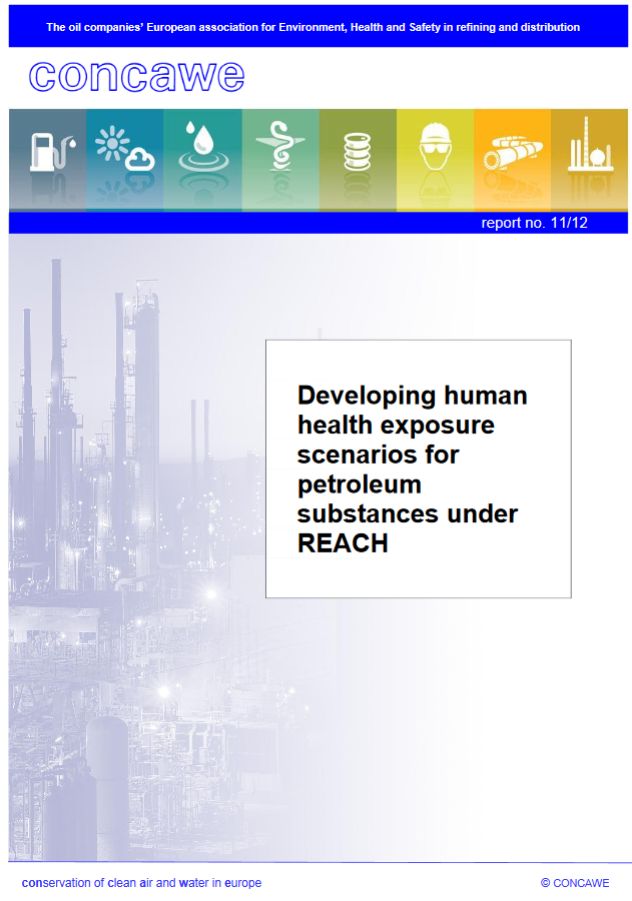
Reports
Developing human health exposure scenarios for petroleum substances under REACH
Report no. 11/12: This report describes the approaches that were adopted by CONCAWE to prepare the human exposure estimates in the chemical safety assessments of the REACH registration dossiers for pe...
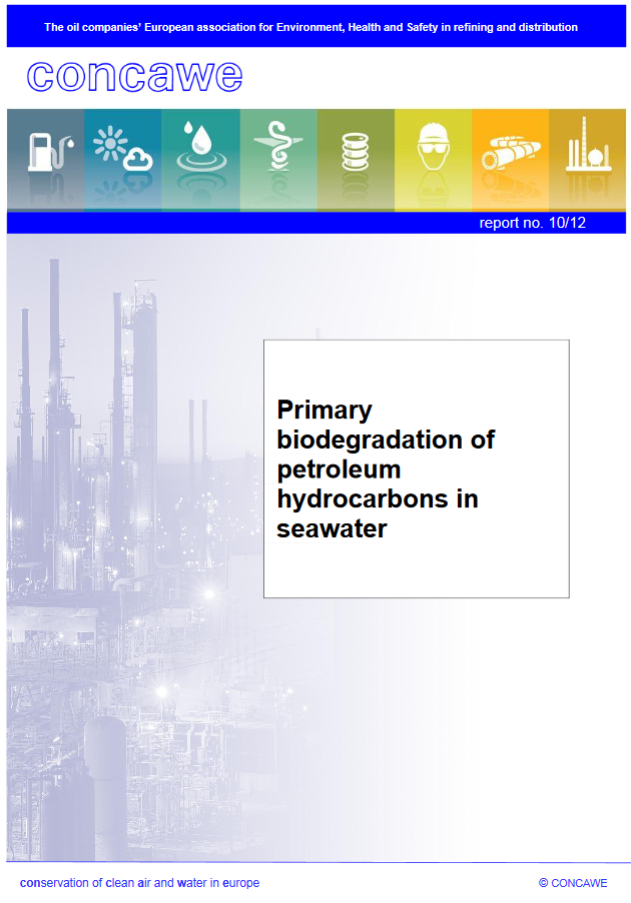
Reports
Primary biodegradation of petroleum hydrocarbons in seawater
Report no. 10/12: This report describes primary biodegradation experiments performed to determine the persistence of higher molecular weight petroleum hydrocarbons in seawater.
Results from the bio...
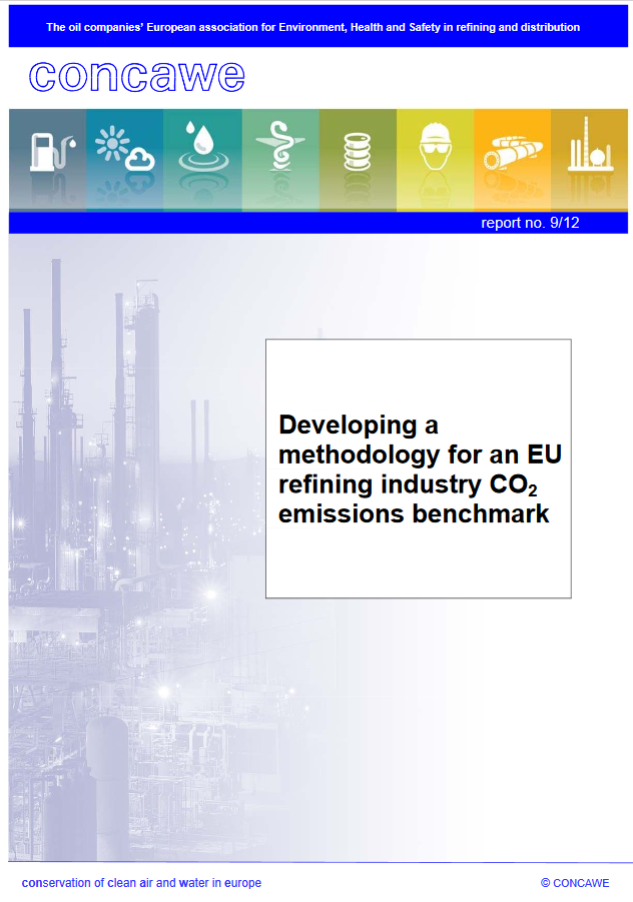
Reports
Developing a methodology for an EU refining industry CO2 emissions benchmark
Report no. 9/12: In the third trading period under the EU Emission Trading Scheme (EU ETS), refineries and other eligible industrial installations may be granted free CO2 emission allowances according...
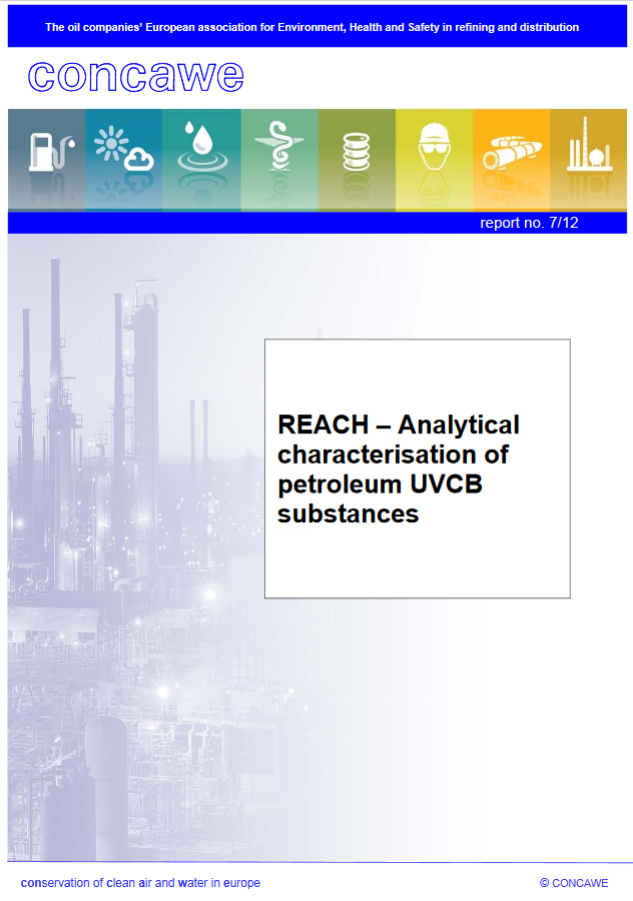
Reports
REACH – Analytical characterisation of petroleum UVCB substances
Report no. 7/12: The purpose of this report is to summarise the findings of the scientific and technical work undertaken by CONCAWE to assess the feasibility and potential benefit of characterising pe...
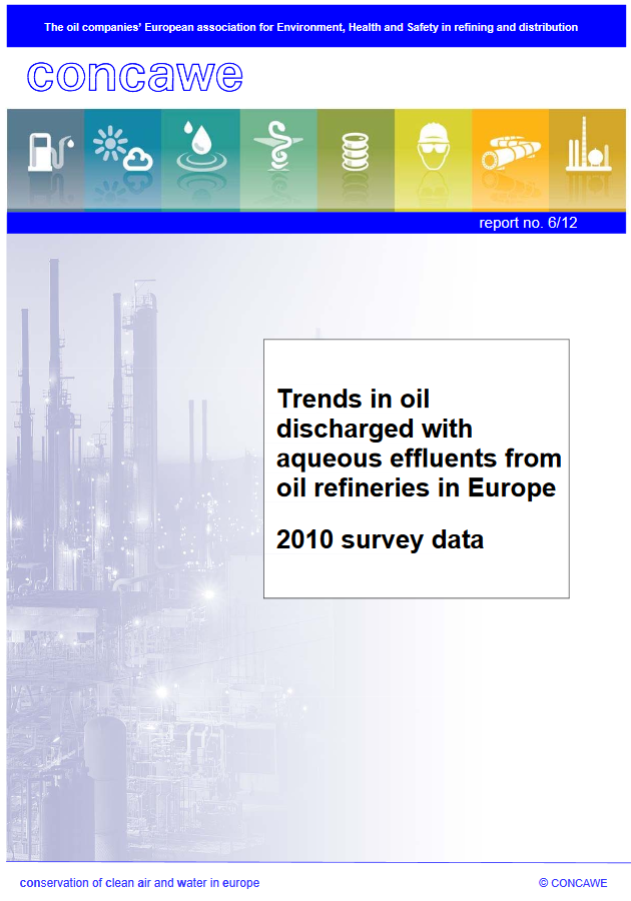
Reports
Trends in oil discharged with aqueous effluents from oil refineries in Europe – 2010 survey data
Report no. 6/12: This report summarises data gathered by CONCAWE in a 2010 survey of effluent water quantity, oil content and treatment processes for refinery installations situated in the EU-27 count...
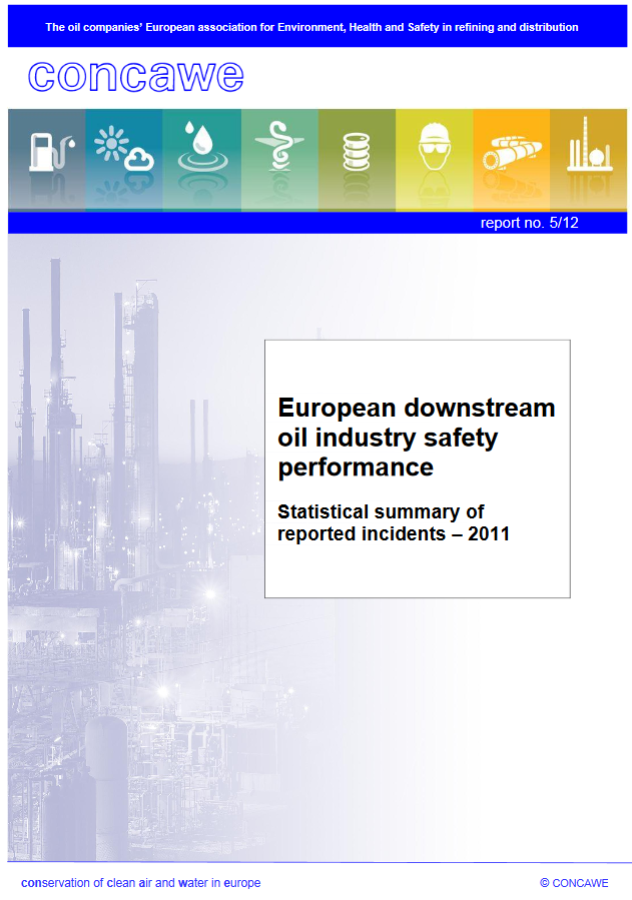
Reports
European downstream oil industry safety performance – Statistical summary of reported incidents – 2011
Report no. 5/12: In this eighteenth annual report on European downstream oil industry safety performance, 2011 statistics are presented on work-related personal injuries for the industry’s own emplo...
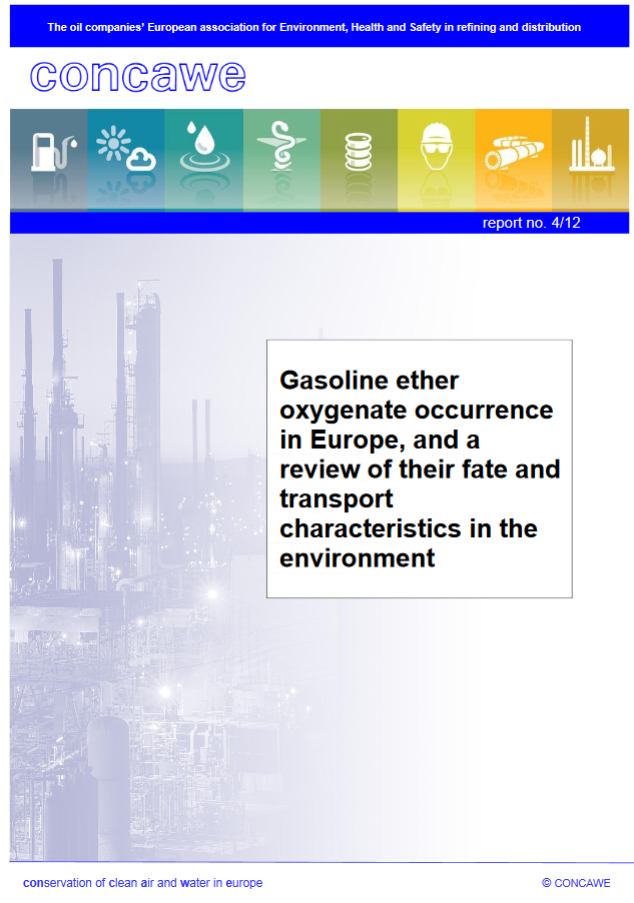
Reports
Gasoline ether oxygenate occurrence in Europe, and a review of their fate and transport characteristics in the environment
Report no. 4/12: Ether oxygenates are added to certain gasoline (petrol) formulations to improve combustion efficiency and to increase the octane rating. In this report the term gasoline ether oxygena...
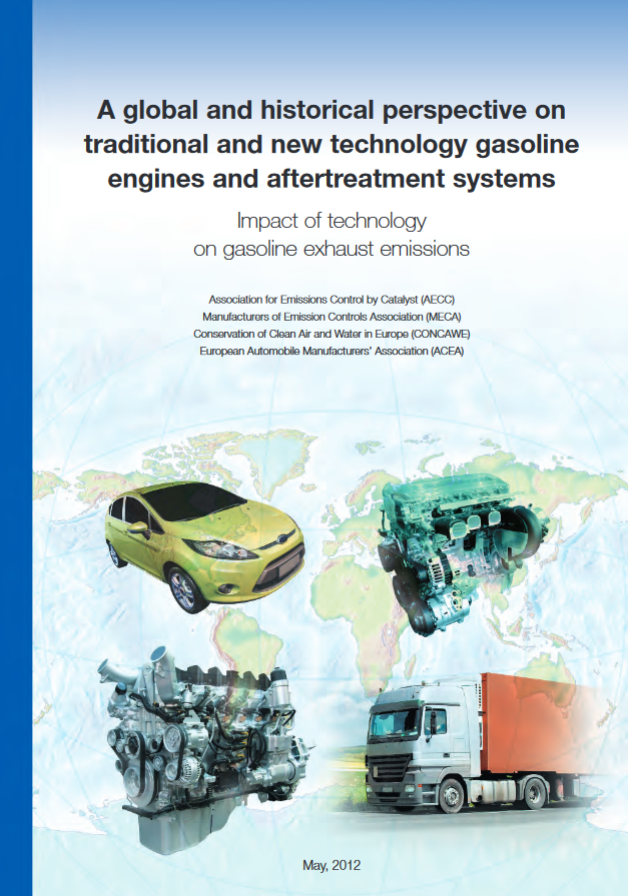
Reports
A global and historical perspective on traditional and new technology gasoline engines and aftertreatment systems
This report reviews the technologies available to meet the exhaust emissions regulations for gasoline-fuelled passenger cars, light-duty and heavy-duty vehicles, non-road mobile machinery and motorc...

Reports
A global and historical perspective on the exposure characteristics of traditional and new technology diesel exhaust
This report reviews the global and historical development of exhaust emissions regulations for diesel-fuelled heavy-duty vehicles, passenger cars, and related vehicles as well as the engine, aftertr...